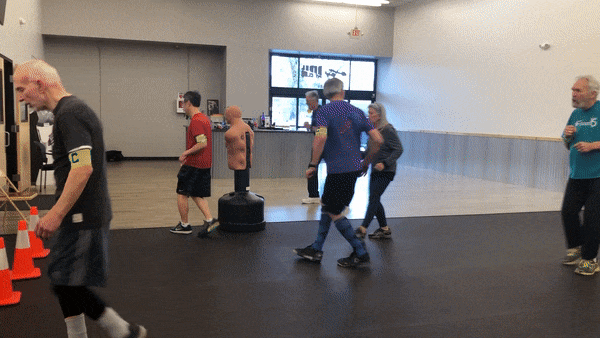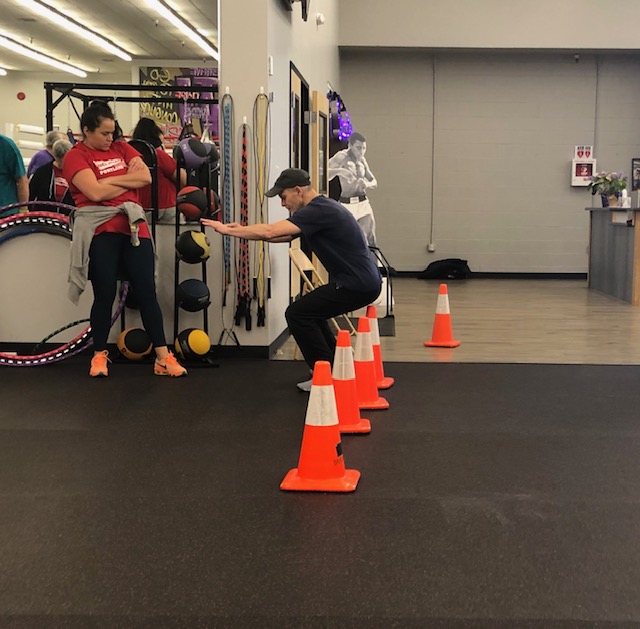
Last week we talked about rounded posture and tucked pelvis that often results from Parkinson’s disease. What can we do about it? We fight with squats!!
Hip hinging (squatting with proper form) is a great way to counter act this.
With proper hip hinging, it allows the sacrum and tail bone to hinge outward like it is supposed to. The trick is to start early, before the bones of the lower back start to fuse in this stooped position. However, even people with advance stooped posture can benefit from this exercise. By sticking your “tail feathers” in the air as you squat back, it gives you access to your glute muscles and helps restore normal curves in your spine. It also reminds the leg bones where they are supposed to be in the pelvis, so walking can improve.

I start all my clients with or without Parkinson’s with hip hinging. This is the most important exercise to do for better posture, balance and fall prevention.
Watch the video below:
- Simply stand with feet a little wider than hip-width apart.
- As you hinge backward into a squat, imagine you are sitting on a chair that is about one foot behind you.
- To balance, as your hips go back, your trunk goes forward. Look ahead.
- As you lower your body, bend your knees and think “Tail Feathers in the Air” and collar bones lifted… lift your heart.
- You should feel your weight shift more in the heels than your toes. If your weight is on your toes, you are too far forward and are tucking your tail.
- Feel the weight push into your heels and you should feel your glute muscles turn on.
- Then stand up tall using your glute muscles.
- You can use a ball against a wall like in the video. Make sure your tail goes under the ball or you will be giving into this posture and basically resting against the ball as you roll down.
Do this exercise two times every day, in 2 sets of 5-10 each. It will encourage proper posture; strengthen your legs and hips, and help with balance and sitting.
Happy Hinging!!
– 